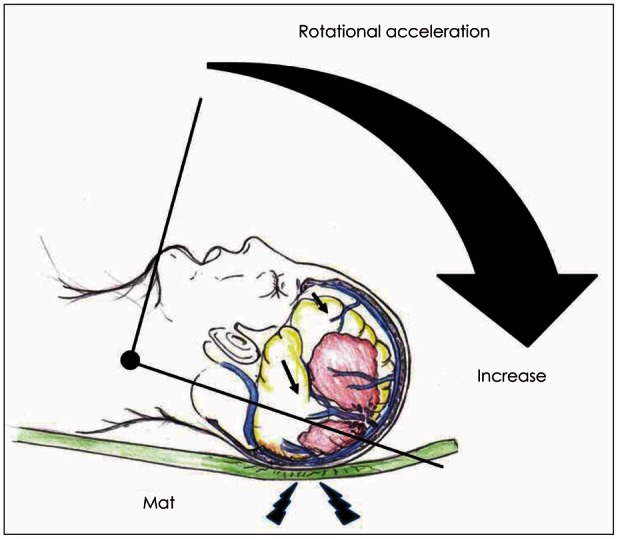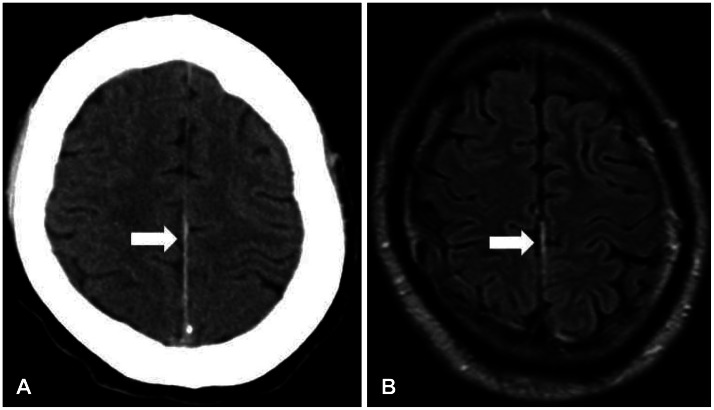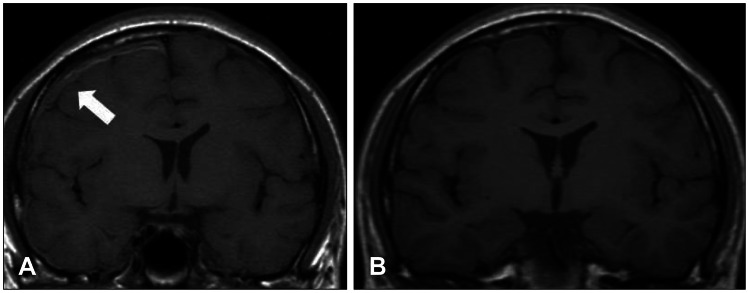Korean J Neurotrauma.
2016 Apr;12(1):1-5. 10.13004/kjnt.2016.12.1.1.
A Review of Sport-Related Head Injuries
- Affiliations
-
- 1Department of Neurosurgery, Institute of Health Biosciences, The University of Tokushima Graduate School, Tokushima, Japan. mizo@yj8.so-net.ne.jp
- KMID: 2163007
- DOI: http://doi.org/10.13004/kjnt.2016.12.1.1
Abstract
- We review current topics in sport-related head injuries including acute subdural hematoma (ASDH), traumatic cerebrovascular disease, cerebral concussion, and chronic traumatic encephalopathy (CTE). Sports-related ASDH is a leading cause of death and severe morbidity in popular contact sports like American football and Japanese judo. Rotational acceleration can cause either cerebral concussion or ASDH due to rupture of a parasagittal bridging vein. Although rare, approximately 80% of patients with cerebral infarction due to sport participation are diagnosed with ischemia or infarction due to arterial dissection. Computed tomography angiography, magnetic resonance angiography, and ultrasound are useful for diagnosing arterial dissection; ultrasound is particularly useful for detecting dissection of the common and internal carotid arteries. Repeated sports head injuries increase the risks of future concussion, cerebral swelling, ASDH, and CTE. To avoid fatal consequences of CTE, it is essential to understand the criteria for safe post-concussion sports participation. Once diagnosed with a concussion, an athlete should not be allowed to return to play on the same day and should not resume sports before the concussion symptoms have completely resolved. Information about the risks and management of head injuries in different sports should be widely disseminated in educational institutions and by sport organization public relations campaigns.
Keyword
MeSH Terms
-
Acceleration
Angiography
Asian Continental Ancestry Group
Athletes
Brain Concussion
Brain Injuries
Brain Injury, Chronic
Carotid Artery, Internal
Cause of Death
Cerebral Infarction
Cerebrovascular Disorders
Craniocerebral Trauma*
Football
Head*
Hematoma, Subdural, Acute
Humans
Infarction
Ischemia
Magnetic Resonance Angiography
Martial Arts
Public Relations
Rupture
Sports
Ultrasonography
Veins
Figure
Reference
-
1. Alexandrino GM, Damásio J, Canhão P, Geraldes R, Melo TP, Correia C, et al. Stroke in sports: a case series. J Neurol. 2014; 261:1570–1574. PMID: 24888314.
Article2. Baugh CM, Stamm JM, Riley DO, Gavett BE, Shenton ME, Lin A, et al. Chronic traumatic encephalopathy: neurodegeneration following repetitive concussive and subconcussive brain trauma. Brain Imaging Behav. 2012; 6:244–254. PMID: 22552850.
Article3. Cantu RC, Gean AD. Second-impact syndrome and a small subdural hematoma: an uncommon catastrophic result of repetitive head injury with a characteristic imaging appearance. J Neurotrauma. 2010; 27:1557–1564. PMID: 20536318.
Article4. Fridley J, Mackey J, Hampton C, Duckworth E, Bershad E. Internal carotid artery dissection and stroke associated with wakeboarding. J Clin Neurosci. 2011; 18:1258–1260. PMID: 21742504.
Article5. Giza CC, Kutcher JS, Ashwal S, Barth J, Getchius TS, Gioia GA, et al. Summary of evidence-based guideline update: evaluation and management of concussion in sports: report of the Guideline Development Subcommittee of the American Academy of Neurology. Neurology. 2013; 80:2250–2257. PMID: 23508730.
Article6. Guskiewicz KM, Weaver NL, Padua DA, Garrett WE Jr. Epidemiology of concussion in collegiate and high school football players. Am J Sports Med. 2000; 28:643–650. PMID: 11032218.7. Harmon KG, Drezner JA, Gammons M, Guskiewicz KM, Halstead M, Herring SA, et al. American Medical Society for Sports Medicine position statement: concussion in sport. Br J Sports Med. 2013; 47:15–26. PMID: 23243113.
Article8. Jordan BD. The clinical spectrum of sport-related traumatic brain injury. Nat Rev Neurol. 2013; 9:222–230. PMID: 23478462.
Article9. Kalantzis G, Georgalas I, Chang BY, Ong C, El-Hindy N. An unusual case of traumatic internal carotid artery dissection during snowboarding. J Sports Sci Med. 2014; 13:451–453. PMID: 24790504.10. Kelly JP, Rosenberg JH. Diagnosis and management of concussion in sports. Neurology. 1997; 48:575–580. PMID: 9065529.
Article11. Kernan WN, Ovbiagele B, Black HR, Bravata DM, Chimowitz MI, Ezekowitz MD, et al. Guidelines for the prevention of stroke in patients with stroke and transient ischemic attack: a guideline for healthcare professionals from the American Heart Association/American Stroke Association. Stroke. 2014; 45:2160–2236. PMID: 24788967.12. McCrory P, Meeuwisse WH, Aubry M, Cantu B, Dvořák J, Echemendia RJ, et al. Consensus statement on concussion in sport: the 4th International Conference on Concussion in Sport held in Zurich, November 2012. J Am Coll Surg. 2013; 216:e55–e71. PMID: 23582174.13. McKee AC, Cantu RC, Nowinski CJ, Hedley-Whyte ET, Gavett BE, Budson AE, et al. Chronic traumatic encephalopathy in athletes: progressive tauopathy after repetitive head injury. J Neuropathol Exp Neurol. 2009; 68:709–735. PMID: 19535999.
Article14. McKee AC, Stern RA, Nowinski CJ, Stein TD, Alvarez VE, Daneshvar DH, et al. The spectrum of disease in chronic traumatic encephalopathy. Brain. 2013; 136(Pt 1):43–64. PMID: 23208308.
Article15. Mori T, Katayama Y, Kawamata T. Acute hemispheric swelling associated with thin subdural hematomas: pathophysiology of repetitive head injury in sports. Acta Neurochir Suppl. 2006; 96:40–43. PMID: 16671421.
Article16. Mueller FO. Catastrophic head injuries in high school and collegiate sports. J Athl Train. 2001; 36:312–315. PMID: 12937502.17. Nagahiro S, Mizobuchi Y. Current topics in sports-related head injuries: a review. Neurol Med Chir (Tokyo). 2014; 54:878–886. PMID: 25367588.
Article18. Ommaya AK, Gennarelli TA. Cerebral concussion and traumatic unconsciousness. Correlation of experimental and clinical observations of blunt head injuries. Brain. 1974; 97:633–654. PMID: 4215541.19. Putukian M. The acute symptoms of sport-related concussion: diagnosis and on-field management. Clin Sports Med. 2011; 30:49–61, viii. PMID: 21074081.
Article




